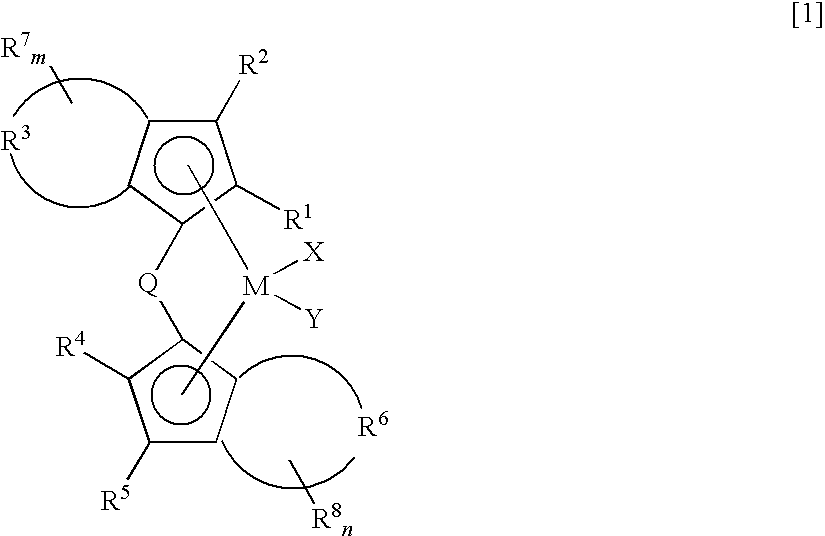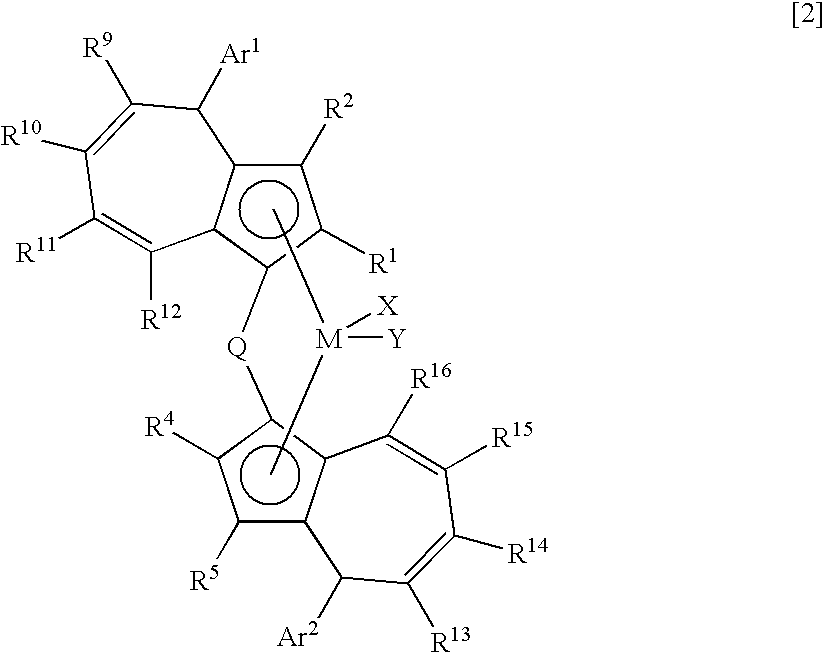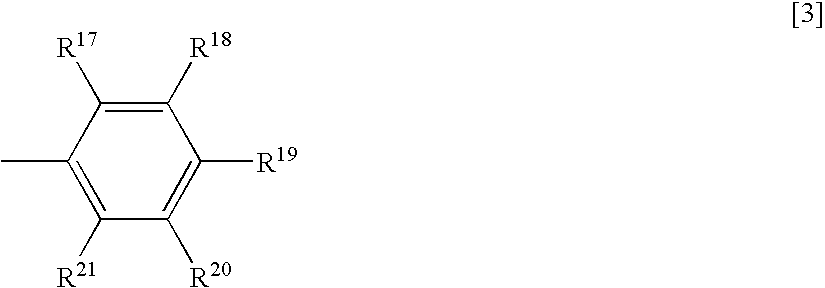Propylene block copolymer
- Summary
- Abstract
- Description
- Claims
- Application Information
AI Technical Summary
Benefits of technology
Problems solved by technology
Method used
Image
Examples
example 1
(1) Step 1: Production of Propylene Polymer (P)
[0121]Under an argon atmosphere, 7.7 mg of the catalyst component (A) and 1 mL of a toluene solution (concentration: 1 mmol / mL) of triisobutylaluminum were added to 40 ml of toluene. There was suspended 161.1 mg of the catalyst component (B) in the above toluene solution, thereby preparing a toluene slurry of the polymerization catalyst components.
[0122]A stainless steel autoclave having a 3 liter inner-volume and equipped with a stirrer was dried under a reduced pressure, and was purged with an argon gas. The autoclave was cooled, and then was evacuated. The above toluene slurry of the catalyst components was introduced into the autoclave. Next, 0.020 MPa of hydrogen and 780 g of propylene were added thereto. The autoclave was adjusted to 20° C. in its inner temperature, and was stirred for 5 minutes. Then, the autoclave was heated up to 65° C., and was stirred for 30 minutes, thereby polymerizing in the step 1.
(2) Step 2: Production o...
example 2
[0126]Example 1 was repeated except that 9.6 mg of the catalyst component (A), 163.7 mg of the catalyst component (B), and 0.015 MPa of hydrogen were used in Example 1(1), respectively, thereby obtaining 324.1 g of a powdery propylene block copolymer.
[0127]The above polymerization operations (1) to (3) were repeated two times, and the obtained polymer was used for the above pelletizing, and for preparing the above injection molded articles.
example 3
[0128]Example 1 was repeated except that 5.6 mg of the catalyst component (A), 149.2 mg of the catalyst component (B), and 0.015 MPa of hydrogen were used in Example 1(1), respectively, the polymerization was carried out at 65° C. for 15 minutes in Example 1(2), and the polymerization was carried out at 80° C. with 48 g of propylene and 93 g of ethylene in Example 1(3), thereby obtaining 224.0 g of a powdery propylene block copolymer.
[0129]The above polymerization operations (1) to (3) were repeated two times, and the obtained polymer was used for the above pelletizing, and for preparing the above injection molded articles.
PUM
| Property | Measurement | Unit |
|---|---|---|
| Temperature | aaaaa | aaaaa |
| Temperature | aaaaa | aaaaa |
| Temperature | aaaaa | aaaaa |
Abstract
Description
Claims
Application Information
 Login to View More
Login to View More - R&D
- Intellectual Property
- Life Sciences
- Materials
- Tech Scout
- Unparalleled Data Quality
- Higher Quality Content
- 60% Fewer Hallucinations
Browse by: Latest US Patents, China's latest patents, Technical Efficacy Thesaurus, Application Domain, Technology Topic, Popular Technical Reports.
© 2025 PatSnap. All rights reserved.Legal|Privacy policy|Modern Slavery Act Transparency Statement|Sitemap|About US| Contact US: help@patsnap.com



